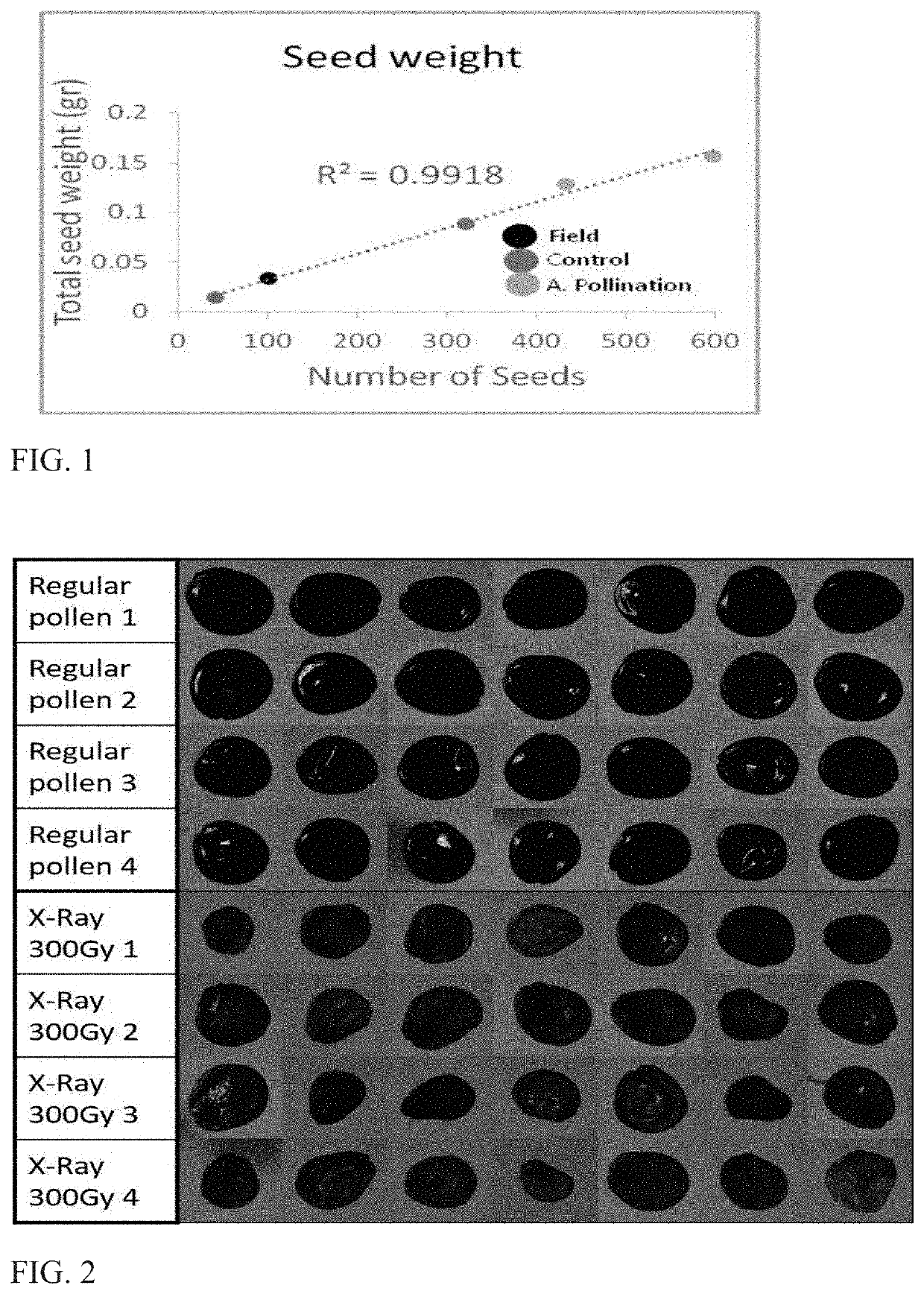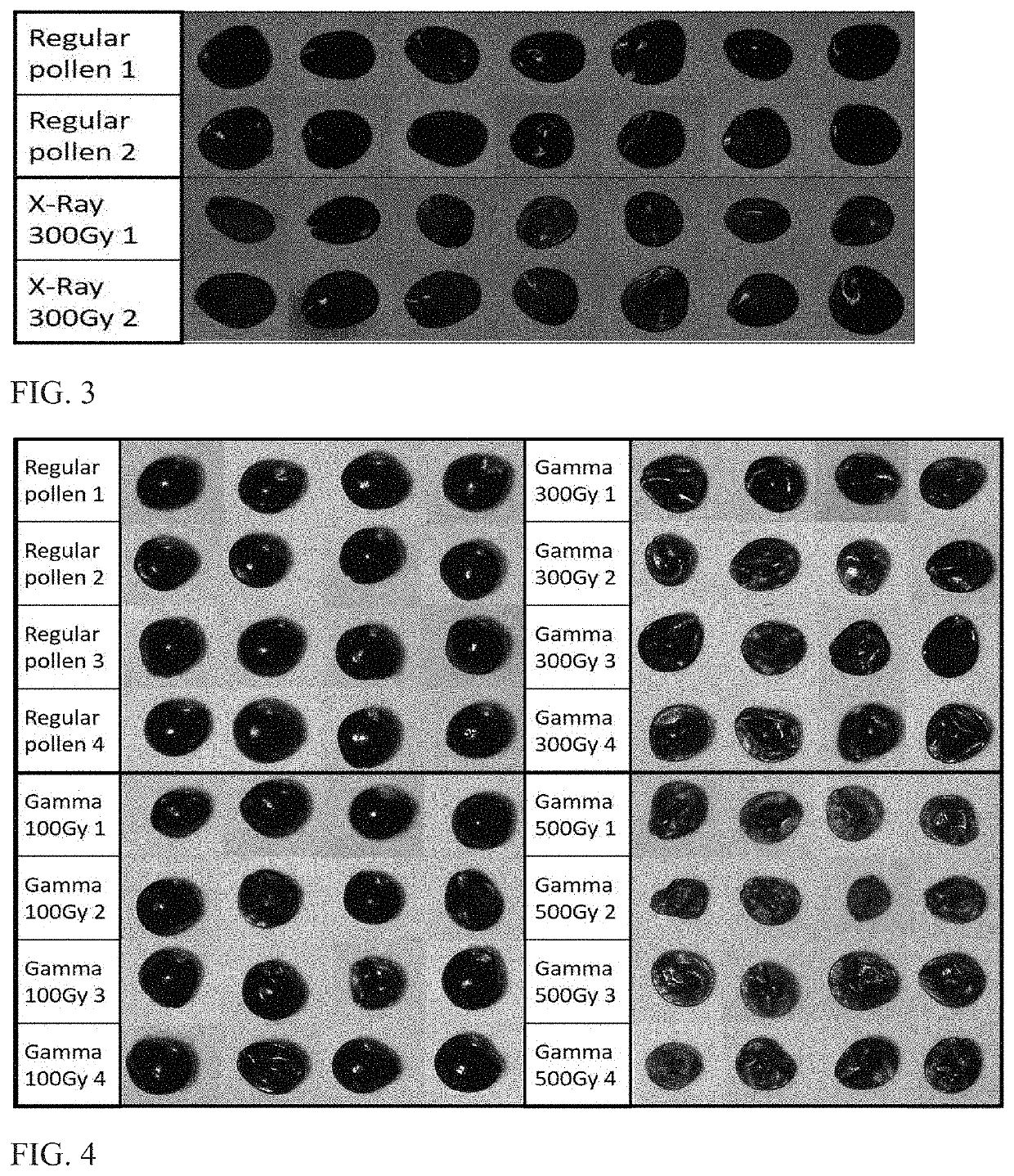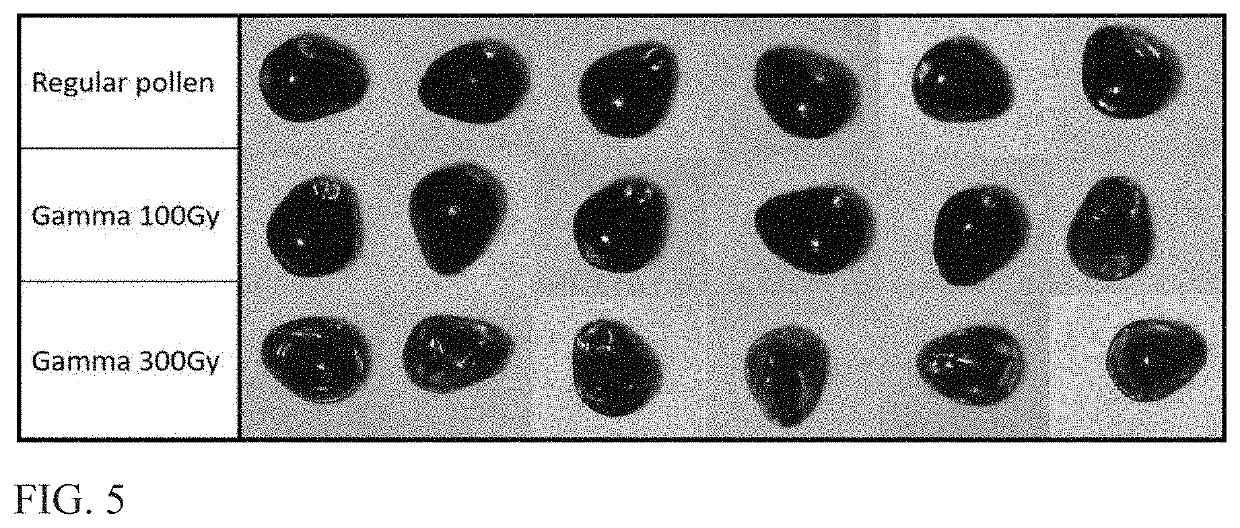Compositions, kits and methods for controlling weed of the amaranthus genus
a technology of amaranthus and weeds, applied in the field of amaranthus weed control kits and methods, can solve the problems of crop yield loss, more than 40 billion usd in annual global loss, and weeds are a major threat to food security, and achieve the effect of reducing the fitness of at least one amaranthus species
- Summary
- Abstract
- Description
- Claims
- Application Information
AI Technical Summary
Benefits of technology
Problems solved by technology
Method used
Image
Examples
example 1
Pollen Collection—Amaranthaceae, Poaceae, Asteraceae
[0270]Paper bags are used for pollen collection. Pollen is collected at morning (9:00 AM) by carefully inserting a male inflorescence into a paper bag and gently tapping the bag to release the pollen off the anthers. This collection process is repeated until pollen dust is visible inside the paper bags. Pollen grains are collected and pooled from multiple male plants. Each paper bag is weighed and the average pollen amount generated from a single male inflorescence and a single plant is calculated.
example 2
Calibration of Pollen Amounts Needed for Optimal Pollination and Comparison Between Different Application Methods for Diecious Species—Amaranthus palmeri, Amaranthus Tuberculatus
[0271]The experiment compares three pollen doses under four different application methods each group contains three female plants that are pollinated. In addition, one group of female plants is not pollinated at all and is used as control for apomixis levels. In all cases female plants are kept isolated from male plants. The doses that are used are approximately equivalent to pollen harvested from 0.1, 1, 10 total pollen of male plants, respectively. The application methods compared are: (i) Direct application using paper bags, (ii) Simple pollen dispersal above the female inflorescence (single application of total amount) (iii) Simple pollen dispersal above the female inflorescence (4 applications in intervals of 2 days, each application of 0.25 of the total amount of pollen dose) (iv) Continuous pollen sp...
example 3
Calibration of Pollen Amounts Needed for Optimal Pollination and Comparison Between Different Application Methods for Monocious Species—Lolium rigidum, Ambrosia Trifida, Ambrosia Artemisiifolia and Sorghum Halepense
[0276]This example is conducted similarly to Example 2 but rather instead of using female plants, all the male inflorescence on the pollinated plants are covered by paper bags in order to avoid self-pollination.
PUM
 Login to View More
Login to View More Abstract
Description
Claims
Application Information
 Login to View More
Login to View More - R&D
- Intellectual Property
- Life Sciences
- Materials
- Tech Scout
- Unparalleled Data Quality
- Higher Quality Content
- 60% Fewer Hallucinations
Browse by: Latest US Patents, China's latest patents, Technical Efficacy Thesaurus, Application Domain, Technology Topic, Popular Technical Reports.
© 2025 PatSnap. All rights reserved.Legal|Privacy policy|Modern Slavery Act Transparency Statement|Sitemap|About US| Contact US: help@patsnap.com



